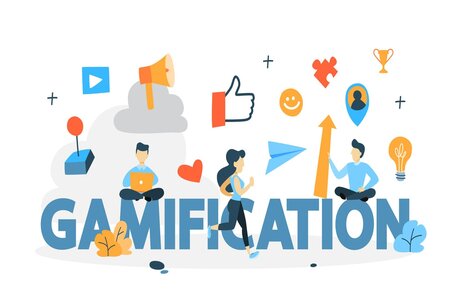How Gamification Tools Increase User Engagement?
By Tanuja Akkannavar
 People enjoy games, and if businesses capitalize on this trend, they may build L&D programs that include gamification into the course material to achieve various objectives like strengthening engagement, incorporating quantifiable challenges into your learning management system, and having a better understanding of your customers' performance.
People enjoy games, and if businesses capitalize on this trend, they may build L&D programs that include gamification into the course material to achieve various objectives like strengthening engagement, incorporating quantifiable challenges into your learning management system, and having a better understanding of your customers' performance.
Gamification software may be used to address the critical challenges of acquisition and retention in consumer and employee engagement efforts. Gamification does not imply the creation of a game to engage clients. It involves the application of game-like processes to a non-game situation to motivate your target audience to engage in specific activities. This may be utilized in customer and team engagement initiatives. Gamification of apps for user engagement is currently incorporated into a wide variety of industry-specific apps. E-commerce, e-learning, fitness, productivity, finance, and sales are just a few examples. Therefore, let us examine how best gamification tools may help businesses enhance user engagement.
1. Reinforcement of Behaviour –
One of the primary reasons for gamification's effectiveness is behavior reinforcement. By including games or game-like components in business marketing, companies may reward people for their activities. Leveling up in a game or getting points for meeting the game's goals may be a way to show how well you did. In the end, rewards are potent because they stimulate the release of dopamine, a neurotransmitter that enhances happiness. As a result, people become more engaged and receptive to future interactions.
Indeed, you may build customer loyalty through prizes and competitions, since an alluring prize after an interactive experience evokes a favorable brand connection and a higher engagement metric.
2. Challenges –
One thing is competition with strangers; another is competition with friends. A game is something that people can play socially, so if a customer is addicted to your brand and enjoys it, you can make it simpler for him or her to enroll a friend and get them interested in your brand as well. This also contributes to the development of a product association.
3. Nature of Progress –
Since players can always tell when they're in the game by knowing their current level and how much longer they have left, this is a necessary aspect of game design. Individuals enjoy the sense of progress, which you can incorporate into your gamification promotional campaign. Consider a lead experiencing the same satisfaction as they do when they complete a level in a video game, since this sense of accomplishment likewise releases dopamine in the user's brain, connecting your business to their sense of enjoyment and eventually establishing a favorable brand connection.
4. Gamification Marketing –
Game-based marketing is a fantastic approach to raising consumer interest in a campaign. Psychological concepts and the sheer enjoyment of playing games are only a few of the numerous factors involved. Gamified marketing, like any other kind of marketing, has the chance of failure. Errors such as creating a game-based campaign solely for it, with no actual ties back to the brand at all, or a lack of marketing are common. Collaborating with industry experts is the most effective method of creating a great gamified experience.
5. Brand Value –
Users may connect with the brand's values more easily through sponsored games, which are better at conveying the brand's message than traditional advertising. Gaming is a great method to get people to interact with your brand, rather than just putting up traditional advertisements.




